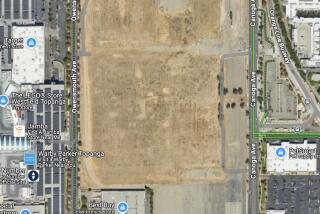Camp Pendleton on EPA List for Waste Dumping : Environment: Hazardous materials are discovered at six sites. However, the military says there is no immediate danger to base residents or wildlife.
The discovery of hazardous wastes dumped at Camp Pendleton has put the Marine Corps base on a list of the U.S. Environmental Protection Agency’s top priorities, but there is no immediate danger to base residents or wildlife, military officials announced Friday.
After a 1988 Defense Department study found that pesticides, paint, solvents and fuel had contaminated the soil in six separate areas of Camp Pendleton, the EPA proposed that the base be added to its National Priorities List, said Lt. Patrick Gibbons, a spokesman. This week, it was among seven military bases to be added to the list, which requires further study and possible cleanup of the sites.
“Camp Pendleton has been here since 1942, before people became environmentally aware,” Gibbons said. “For many years, we disposed of things in ways that we now know were unsafe.”
But Gibbons said the contamination does not pose a danger to people who live on or near the base. He said the camp’s self-sufficient water supply, which is stored in an underground aquifer, has passed quality tests, which are conducted routinely.
The areas requiring remedial investigation are:
- An area near Vandegrift Boulevard at the bottom of Rattlesnake Canyon Road where pest-control trucks, used to spray insecticides, were washed out.
- A drainage ditch near the Marine Corps Air Station, where solvents and paint were routinely dumped.
- A firefighter drill field at the air station. Gasoline, jet fuel and diesel saturated the soil, as well as the chemical foams used to put out the fires.
- The Defense Reutilization and Marketing Office scrap yard, where some metal and old automobile batteries were buried.
- The Stuart Mesa Stabilization Pond, a clay-lined lake used to filter sewage, site of some unauthorized dumping of oil and solvents.
- The Las Pulgas landfill, where construction materials and a variety of toxic compounds were placed.
More to Read
Sign up for Essential California
The most important California stories and recommendations in your inbox every morning.
You may occasionally receive promotional content from the Los Angeles Times.










